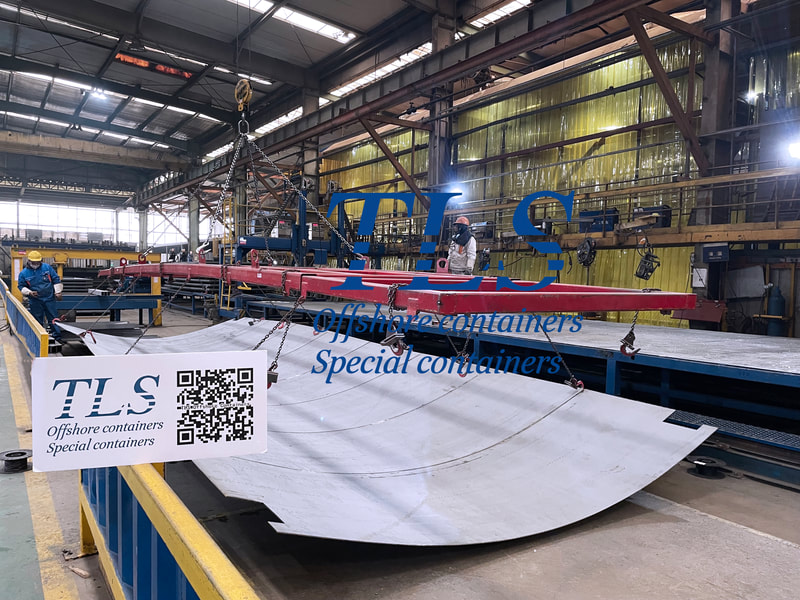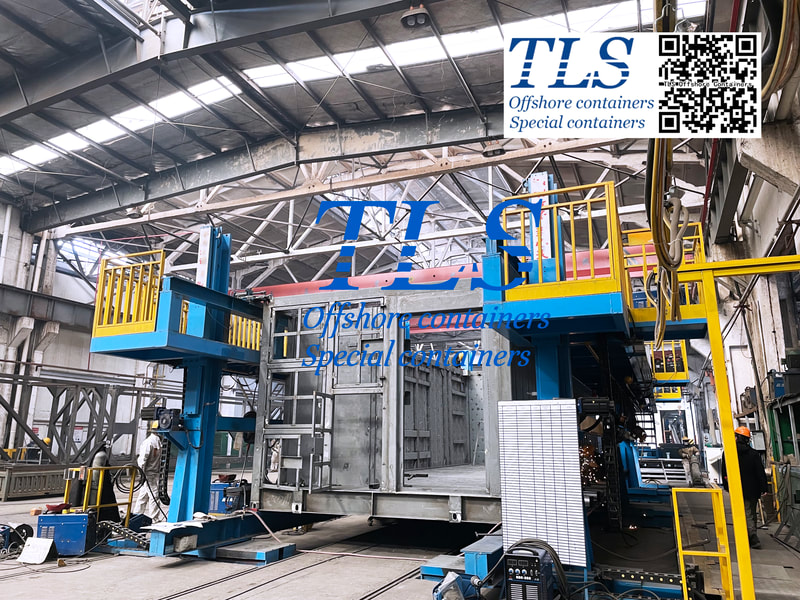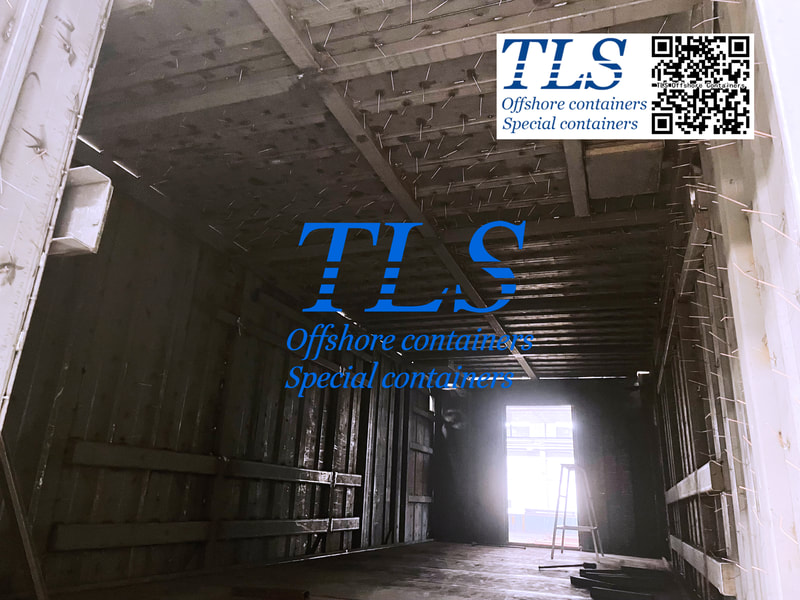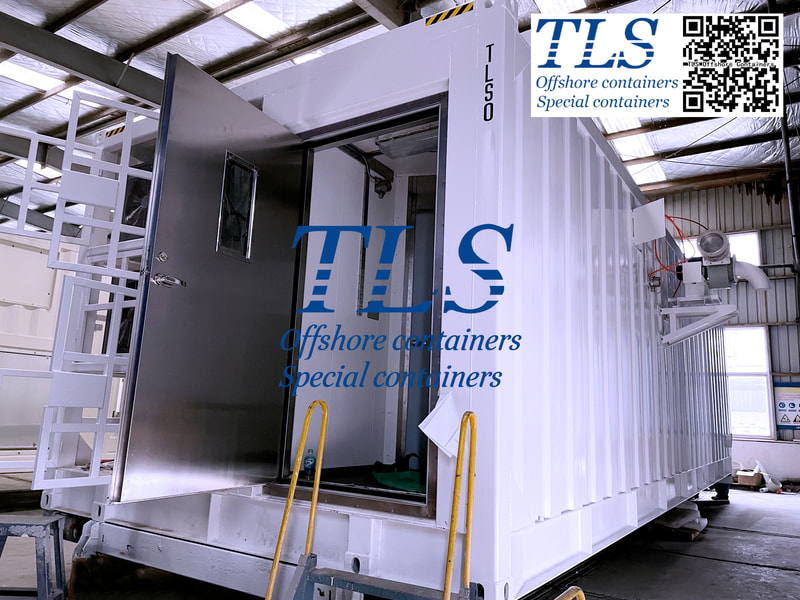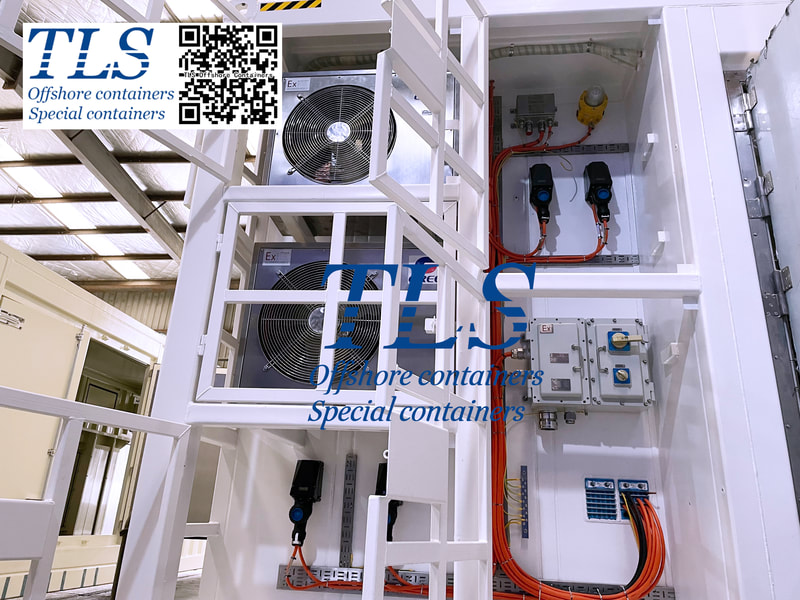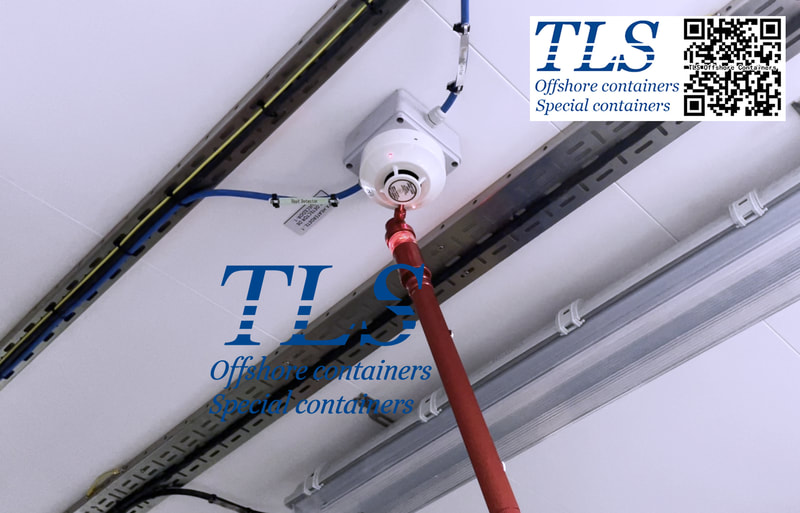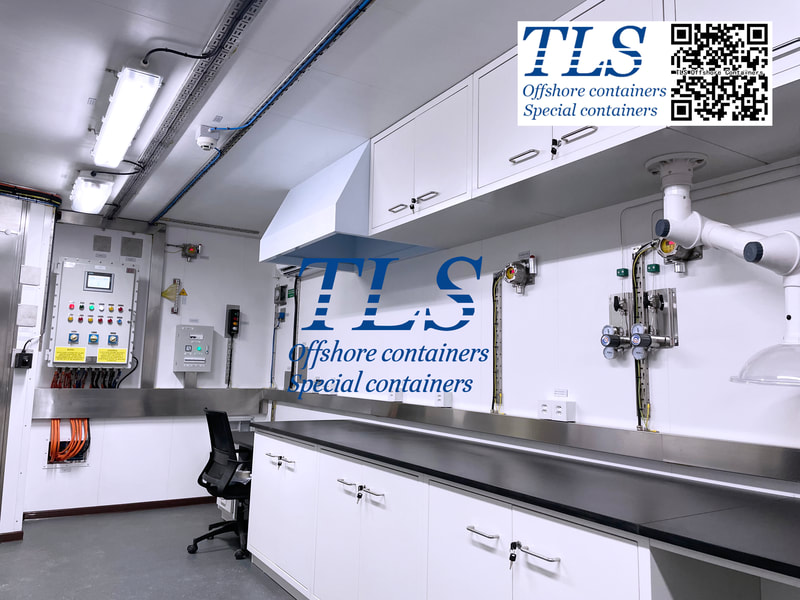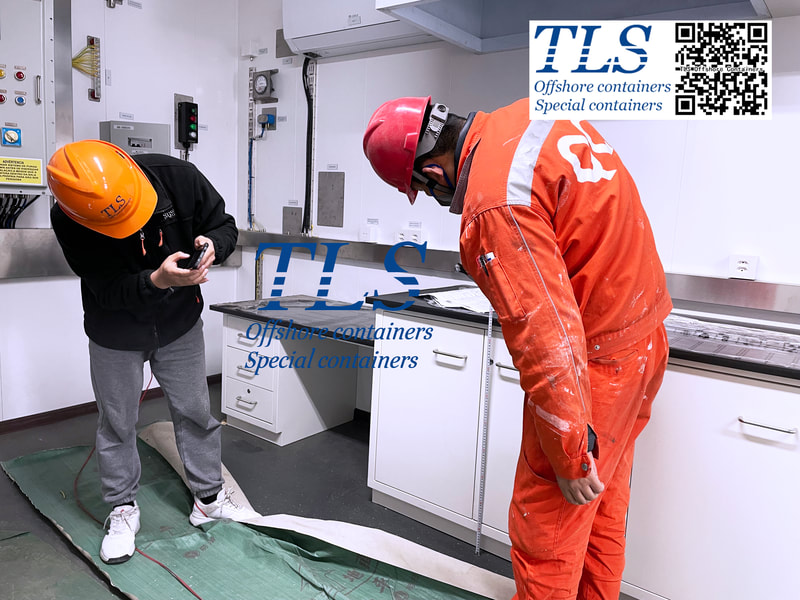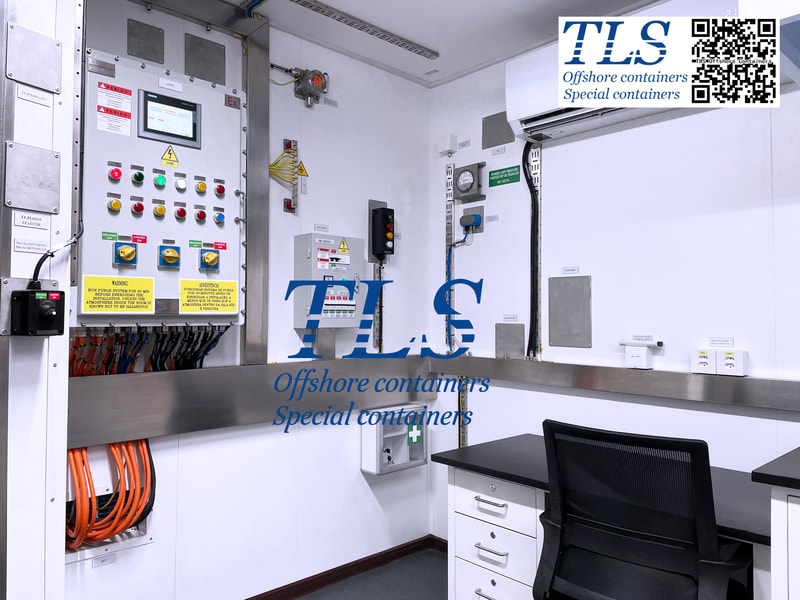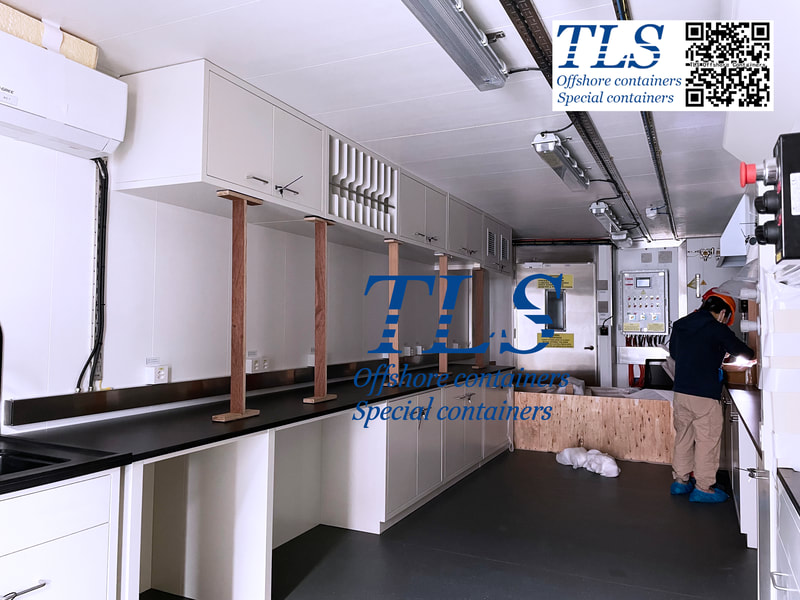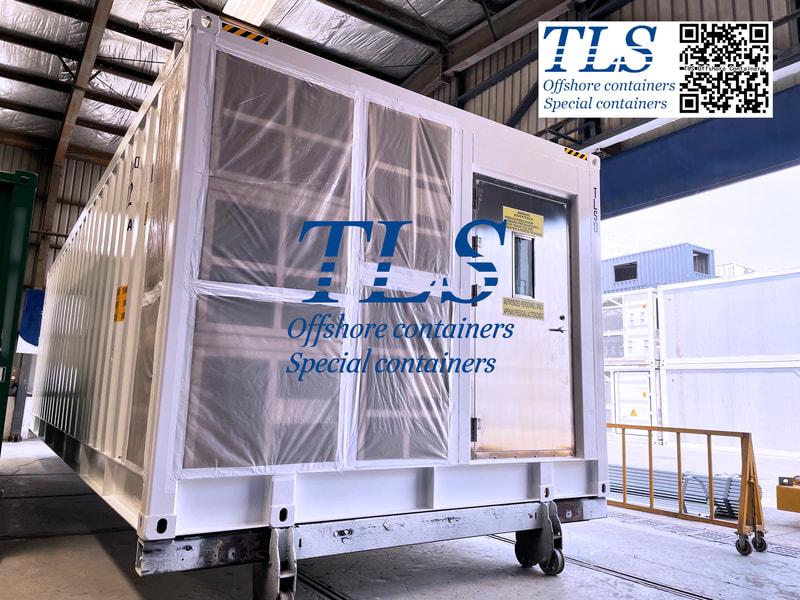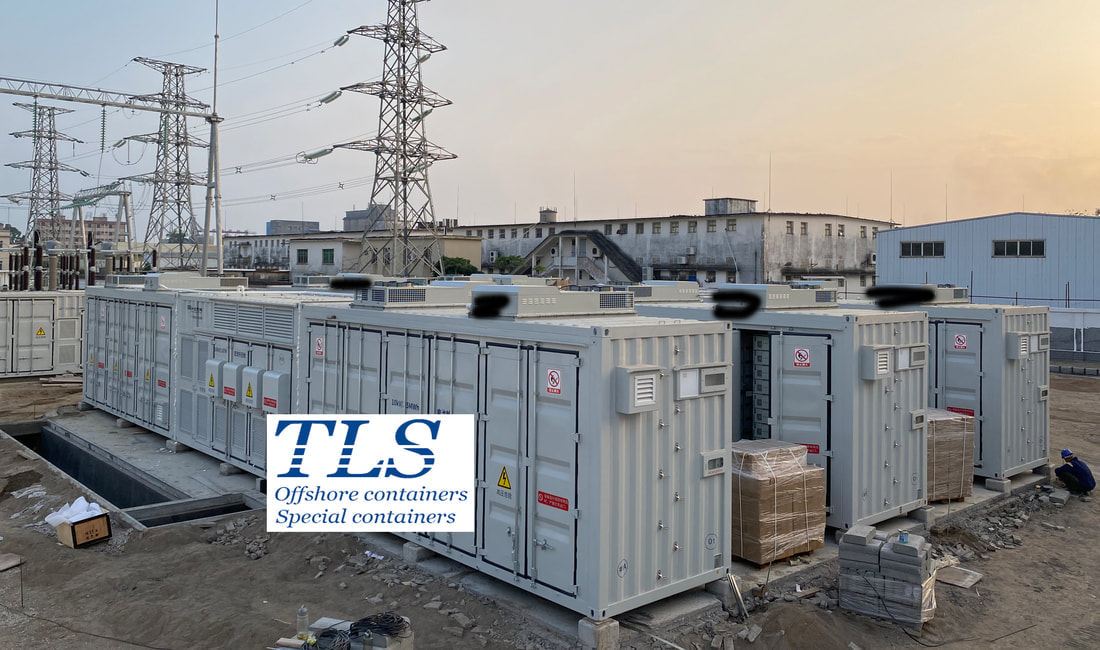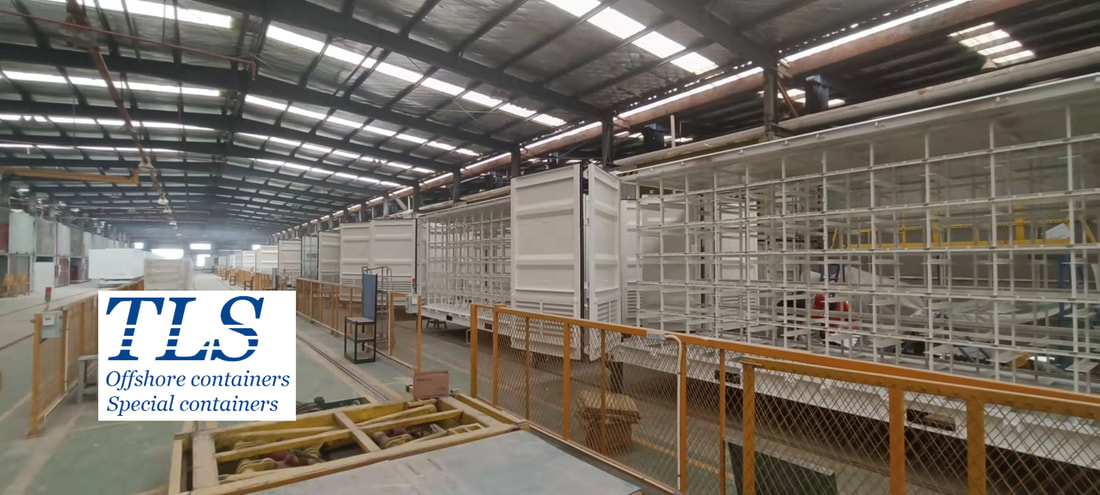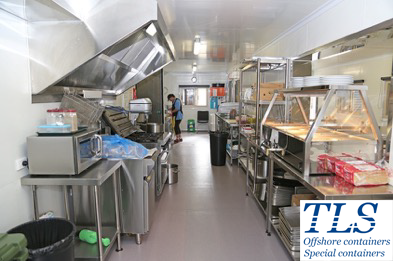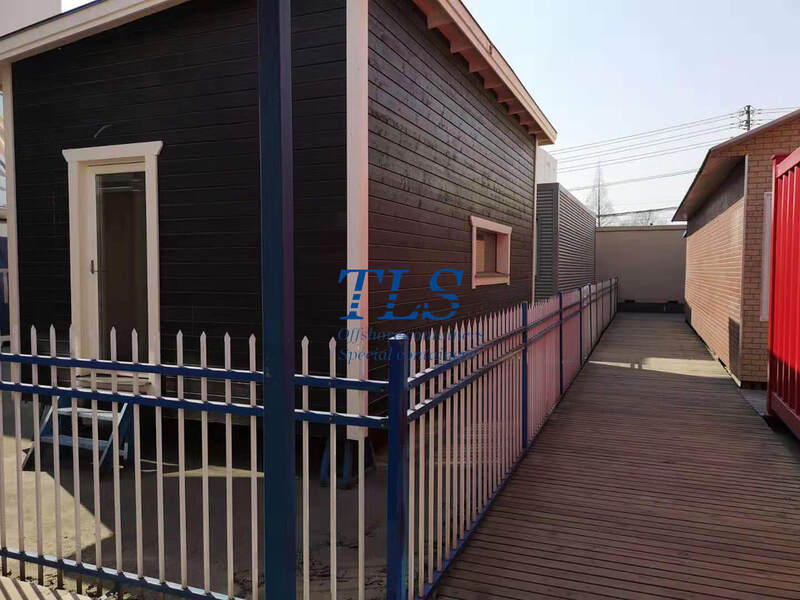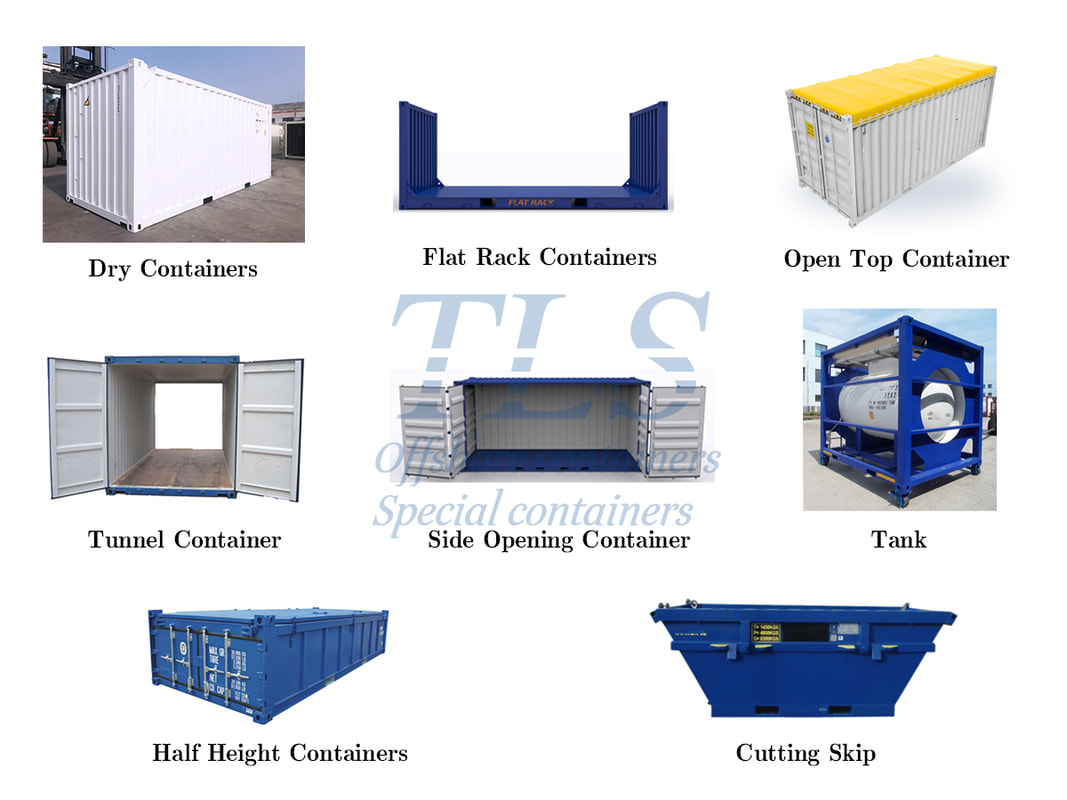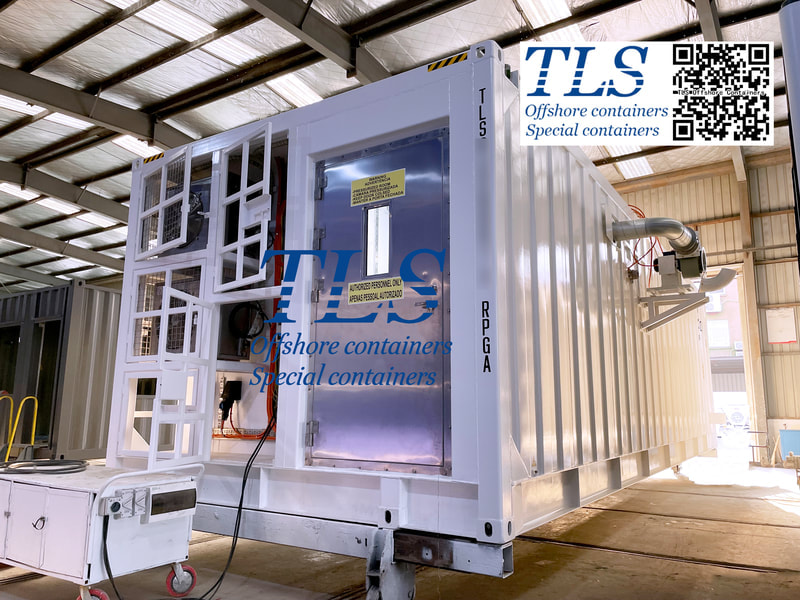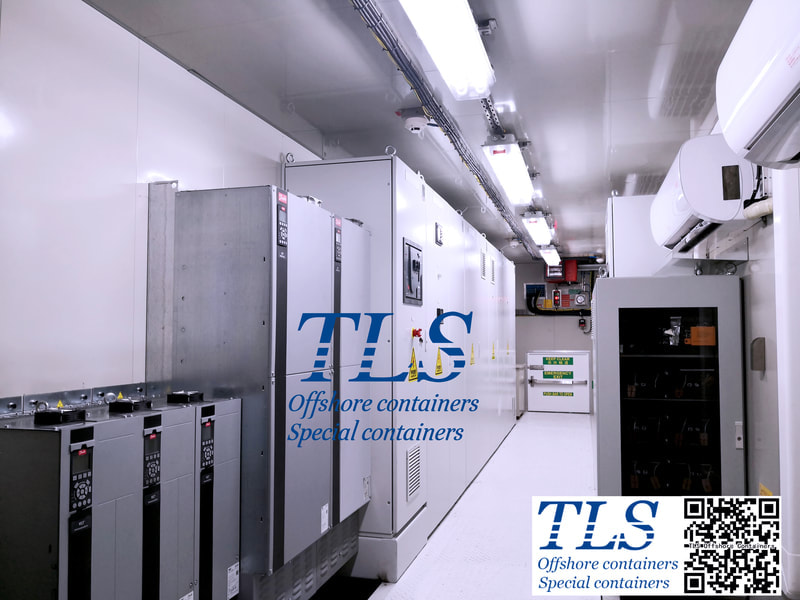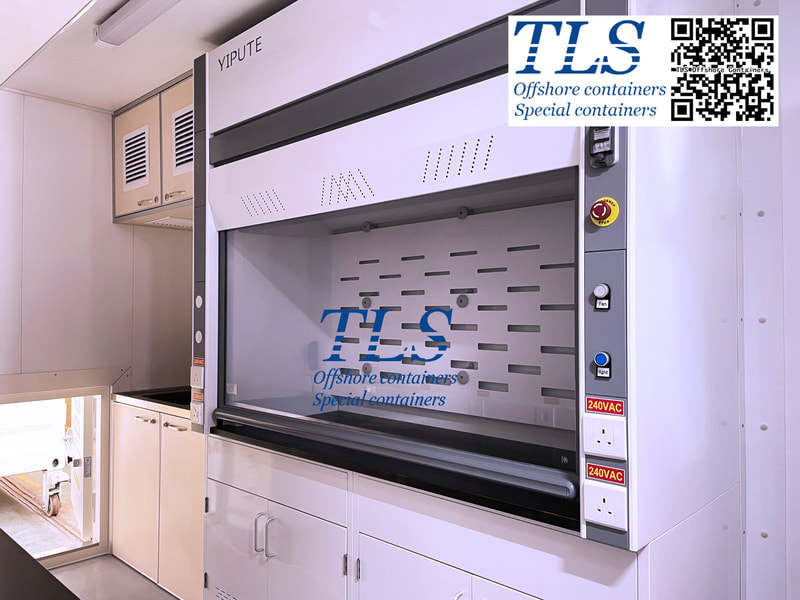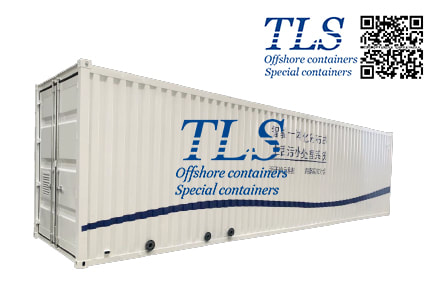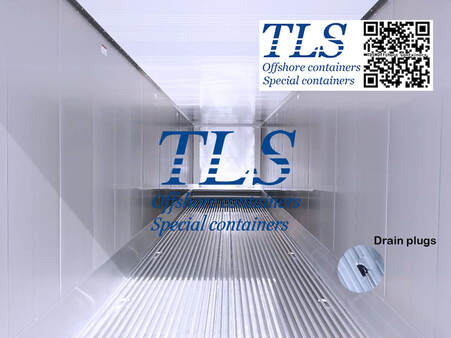|
This is a positive pressure explosion-proof, fire grade A60 laboratory container, which can be used from -25 ℃ to +50℃, with good sealing, rain resistance, sand resistance, suitable for land oil exploration and offshore oil exploration in hazardous areas and desert areas. The design and construction meet the IEC60079-13 2010 specification, DNV2.7-1 and SOLAS 2009. Explosion-proof appliances meet the CNEX or ATEX explosion-proof standards. The positive pressure test container is integrated with CPFG control cabinet, positive pressure air path system, explosion-proof centrifugal air unit, safe power supply system, fire alarm system, lighting system, alarm system, explosion-proof air conditioner, air valve control system and explosion-proof isolation switch box. In order to meet the various conditions for the products to be used in Petrobras, TLS insists on strictly controlling the quality of the products in every step, from preprocessing of sheet and section steel to welding and assembly, from painting and decoration to debugging and installation, from label and decal to cleaning and packing. In addition to professional certification certificates, professional detection methods, real and convincing data and several measured operation results are the quality assurance that TLS believes should be provided to customers. TLS is an international company that can customize onshore | offshore special containers for you. Any requirements, please contact us directly: E-mail: [email protected] Hotline: +65-65637288; +65-31386967 Key words: #Petrobras #brazil #oil & #offshore standard #brazil oil #pressurised container #laboratory container #IEC60079-13 #DNV2.7-1 #CNEX #TLS offshore containers The ability to store and transfer the electricity generated by solar panels and wind turbines is the key to get energy for users when they need it—during outages, when the sun is not shining, or the wind is not turning the turbines blades. Battery energy storage system (BESS) container helps balance electricity generation and demand—creating a more flexible and reliable grid. Battery Energy Storage Systems (BESS) are one way to store energy so system operators can use their energy to soft transition from renewable power to grid power for uninterrupted supply. Ultimately, battery storage can save money, improve continuity and resilience, integrate generation sources, and reduce environmental impacts. If you have any inquiries on BESS containers, please download the check list and send it together with your inquiry. Don’t hesitate to contact us for more information about the battery energy storage system container, We are eager to explain the possibilities for your applications. Please download Energy Storage System (ESS) Containers brochure for reference. The Offshore Living Quarter Container provided by TLS is an accommodation, kitchen, dining room, laundry room, studio module for offshore environment that meets DNV2.7-1 and A60 fire protection requirements For offshore construction and exploration, to assure the construction progress of the project, the construction personnel normally have to live on the ocean for a long time, and the living quarter container is the most economical and convenient living equipment. Offshore Living Quarter Container can be equipped with fresh water recovery devices to decrease unnecessary waste of fresh water, while at the same time, rainwater from the ocean can be treated into usable fresh water resources. At the same time, the use of solar power generation can fix the problem of electricity consumption in some Offshore Living Quarter Containers, both energy saving and environmental protection. The Offshore Living Quarter Container can also be equipped with accommodation, meeting rooms, power distribution rooms, locker rooms and other facilities to meet people's daily work and living needs at sea. Key words: #Accommodation Container #Temporary shelter #Temporary #refuge shelter ( #TR) #Sewage Treatment Container #DNV2.7-1 #A60 #Offshore Living Quarter Container #DNV2.7-1 What are the common container structures? Different containers usually have different shapes and structures due to different uses. Let's take a look at the common container structures. The common dry box structure is often used to transport common cargo and is the most common type of container.
In addition to containers used to transport goods, do you know what types of special containers there are?
Key words: #Dry Containers #Flat Rack Containers #Open Top Container #Tunnel Container #Side Opening Container #Tank #Half Height Containers| Cutting Skip #Reefer Container #Refrigerated Container #Positive Pressure Container #Negative Pressure Container #Energy Storage System (#ESS) #Lab Container|Workshop Container #Accommodation Container #Temporary shelter #Temporary #refuge shelter ( #TR) #Sewage Treatment Container A refrigerated |reefer Container is a closed container with refrigeration equipment and low thermal conductivity materials on the inner wall which is used to transport or preserve fresh fish, fresh meat, frozen food, fruits, vegetables, films, medicines and other required goods. Refrigerated containers are also divided into refrigerated containers and insulated containers.
Livestock and poultry meat Include cattle, sheep, pigs, chickens, ducks, geese, etc. Usually, meat reaches a dormant state below -18°C, and if it is below -23°C, the refrigeration period can be doubled. Frozen fish and aquatic products The storage time of fish and seafood is closely related to temperature. Under normal conditions, the freezing period increases by a factor of 3 for every 10°C decrease in temperature. Low-fat fish has a shorter freezing period, while muscle red fish has a shorter freezing period. Chocolate products Shippers often ask to check that the humidity is set to 65%. Depending on the variety of chocolate, the temperature is usually between 8°C and 18°C. Temperature control products Goods that require temperature stability during transportation, such as films, medicines, food, etc. To avoid clumping and deterioration, the temperature was set between -2°C and 30°C. Dangerous goods and harmful goods Reefer containers maintain high standards and maintain quality for the transport of dangerous or sensitive cargo. This type of refrigerated container is distinguished by a particular color and logo. Mixed refrigerated goods Generally, it should be avoided to mix all kinds of fresh fruits and vegetables in the reefer container. Due to the volume, variety, cost and other reasons, pay attention to the temperature during transportation, Fruits and vegetables are mixed in containers. The closer the refrigeration temperature is, the better. Key words: #reefer #refrigerated #TLS offshore containers #Portable reefer container #Insulation containers #container cold storage |
Archives
July 2024
Categories
All
|
- Home
-
Containerised solutions
- Intelligent pressurised container | MUD logging cabin
- Battery energy storage system (BESS) container
- Flexible grid tied battery storage system
- Laboratory container | workshop container | Equipment containers
- Temporary refuge shelter | Toxic gas refuge | Safe haven
- Offshore accommodation cabin | office container
- Reefer container | Refrigerated container
- Intelligent waste water treatment container
- Fresh water generator container
- Cargo Containers
- Product photos & videos
- News & Blogs
- Contact us
|
Featured products
Intelligent pressurised container Temporary refuge (TR) shelter, toxic gas refuge (TGR) Battery energy storage system (BESS) container Containerised waste water treatment plant Fresh water generator container Reefer container Laboratory container, Workshop container Accommodation container Offshore closed container |
All Rights Reserved 2020 © TLS Offshore Containers / TLS Energy
|

